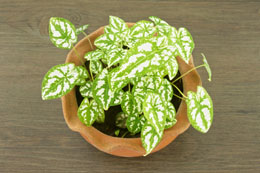Houseplants are great for giving a natural ambiance to our homes. But some varieties may prove fatal. This Buzzle article tells you more on some common toxic houseplants.

Keeping houseplants is one of the most popular and fancied hobbies of many. But with kids and pets around, it becomes very essential to know about the features of the plants which you are going to bring home. This is due to the fact that there are certain varieties which bear toxic properties and can be extremely harmful to the health of both humans and animals. Some of these plants contain poison in certain parts, while some are entirely toxic. According to the National Poison Control Center, such plants must not be grown in houses with small children and pets.
Toxic Houseplants
Crown of Thorns
All parts of the Crown of Thorns, native to Madagascar, are poisonous for human beings and animals. The dried parts of this plant are highly toxic. Its white, milky sap can give rise to severe blistering if it comes in contact with open cuts or eyes. The blisters are often accompanied by intense pain. Even the nectar which may be derived from the flowers of the plant is toxic in nature.
Caladium
Caladium is also known as Elephant Ear, Heart of Jesus, and Angel Wings. It is native to South and Central America. Although the entire plant contains poison, the leaves are the ones which are potentially dangerous. Ingestion of any part of the plant is known to bring on symptoms such as severe irritation to the mouth and throat, redness, swelling and pain in the eyes, stomachache, diarrhea, and difficulty in breathing. If the ingestion takes place in larger quantities, it may even cause coma or death. In some cases, the poison may even trigger permanent damage to the kidneys and liver.
English Ivy
The English Ivy is grown both as indoor and outdoor ornamental plants. Difficulty in breathing, convulsions (violent uncontrollable contractions of muscles), vomiting, paralysis, and coma are the main symptoms which may occur after ingestion of any part of this dangerous variety. Leaves may cause skin irritation upon contact.
Jerusalem Cherry
Apart from bearing oblong green leaves and small white clustered blossoms, the plant also produces red or orange berries. These berries resemble small tomatoes and are more poisonous than other parts. Consumption may cause symptoms such as stomach pain, vomiting, headache, dilated pupils, drowsiness, diarrhea, delirium, and coma. The cherries are highly poisonous to dogs, cats, and certain birds.
Peace Lily
The Peace Lily is one of the most beautiful and popular houseplants, but it is not for homes with kids and pets around. Mouth ulcerations excessive drooling, choking, swelling, and vomiting are common symptoms which occur upon ingestion of any part of the plant. Even a small portion of the leaves, if consumed by a dog or cat, can be more dangerous and potentially lethal.
Some Other Toxic Varieties
- Acacia
- Acer sanguineum
- Adam and Eve
- Philodendron
- Mums
- Dieffenbachia
- Kaffir Lily
- Croton
- Devil's backbone
- Heart leaf philodendron, Philodendron
- Azalea
- Angel's trumpet
- Sago palm
- English holly
- Christmas rose
- Chrysanthemums
- Red princess
- Asparagus fern
- Mistletoe
- Daffodil
- Snake plant
- Calla lily
- Honeysuckle
If you do not have small kids or pets at home, then you need not worry about bringing any of these plants home. Otherwise, it is best if you go for non-toxic houseplants.






 Keeping houseplants is one of the most popular and fancied hobbies of many. But with kids and pets around, it becomes very essential to know about the features of the plants which you are going to bring home. This is due to the fact that there are certain varieties which bear toxic properties and can be extremely harmful to the health of both humans and animals. Some of these plants contain poison in certain parts, while some are entirely toxic. According to the National Poison Control Center, such plants must not be grown in houses with small children and pets.
Keeping houseplants is one of the most popular and fancied hobbies of many. But with kids and pets around, it becomes very essential to know about the features of the plants which you are going to bring home. This is due to the fact that there are certain varieties which bear toxic properties and can be extremely harmful to the health of both humans and animals. Some of these plants contain poison in certain parts, while some are entirely toxic. According to the National Poison Control Center, such plants must not be grown in houses with small children and pets.